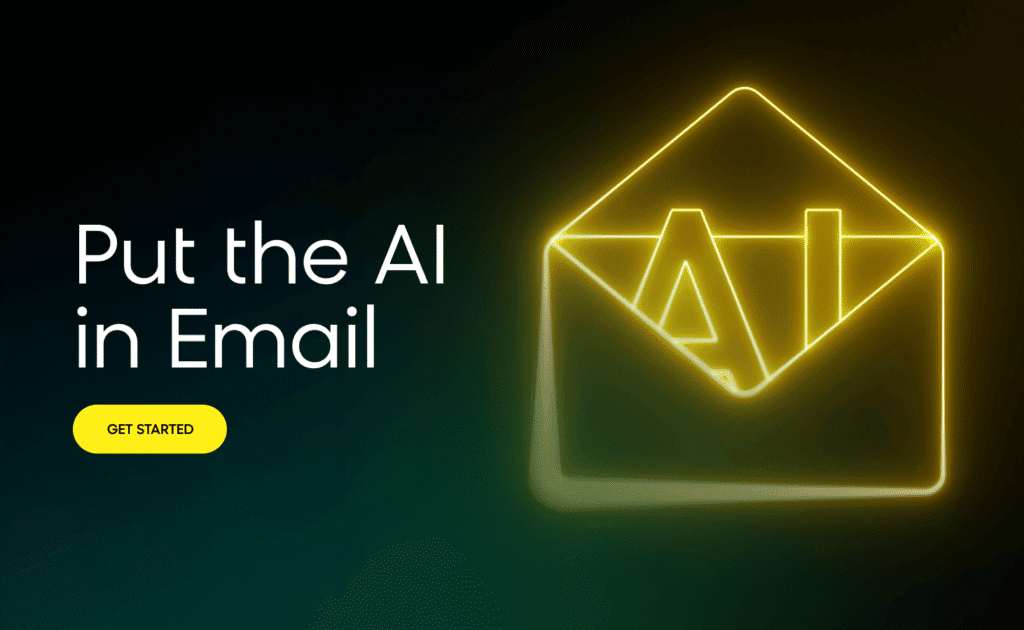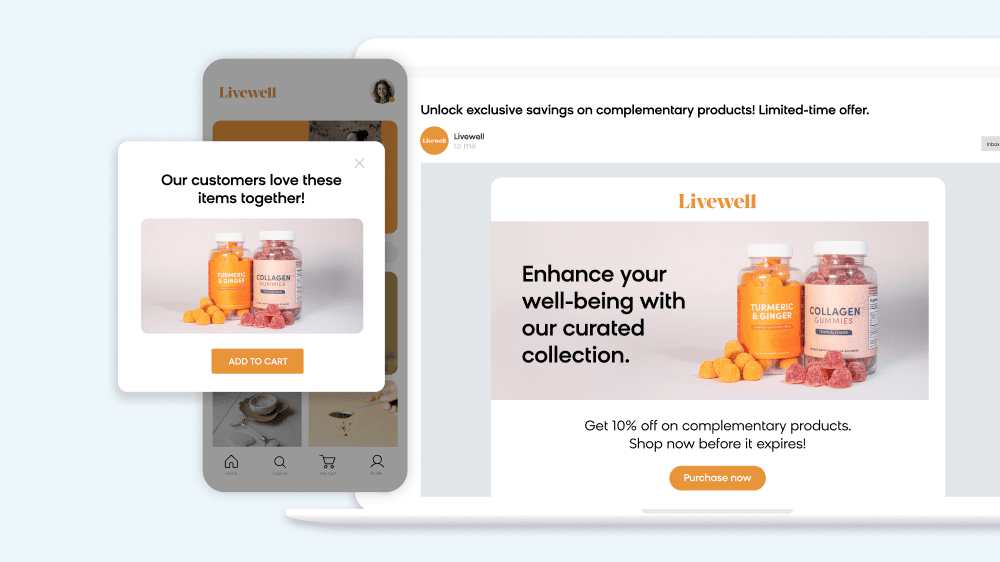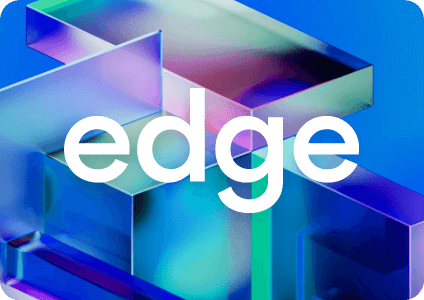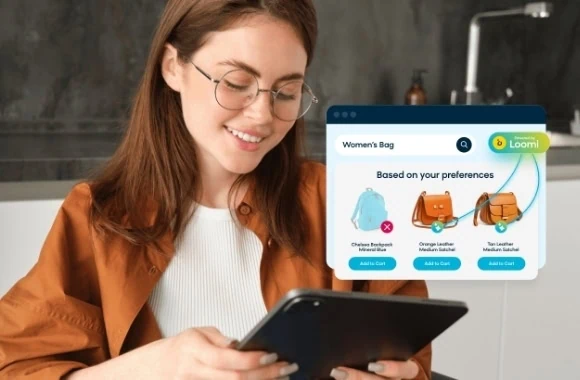Retail email marketing delivers an impressive ROI of $36-$42 for every dollar spent, consistently outperforming other digital marketing channels, yet most retail brands are leaving money on the table. The culprit? Outdated execution methods that create unnecessary friction between your brand and your customers.
Manual campaign builds, surface-level personalization, and siloed customer data force your marketing team to wrestle with technology instead of engaging customers. Meanwhile, commerce-ready AI platforms like Bloomreach are transforming email from a campaign asset into an autonomous growth engine — think of it as having a brilliant sales associate working around the clock for every single customer.
The retailers winning today have moved beyond batch-and-blast campaigns. They deliver personalized, instant responses to customer behavior that drive measurable revenue growth. Let’s explore how retail email marketing has changed and how you can adapt your strategy to be future-proof.
From Manual Campaigns to Instant Intelligence: The Revenue Evolution
Your retail email marketing has evolved through three distinct generations, each unlocking dramatically different revenue potential.
First generation: Static lists, basic demographics, manual scheduling. You batch messages to broad groups and hope for engagement. Revenue impact remains minimal because relevance stays low.
Second generation: Automated workflows and behavioral triggers through traditional platforms. Progress, yes — but these legacy systems struggle with complex customer journeys. Their segmentation remains limited and requires extensive manual configuration, creating bottlenecks that delay revenue opportunities.
Third generation: Personalized content delivered through dynamic behavioral and commerce signals. Modern platforms like Bloomreach Engagement enable instant segmentation, AI-driven journey personalization through Loomi AI, and unified data orchestration that activates revenue opportunities within minutes, not days or weeks.
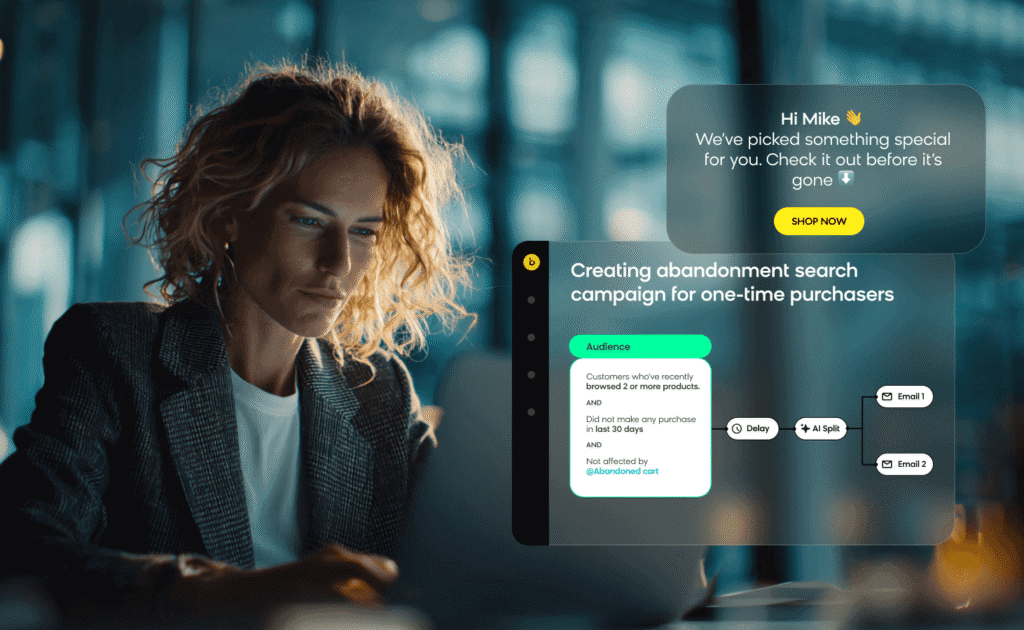
Why does this evolution matter for your bottom line? Customer expectations have fundamentally shifted toward hyper-personalization. Personalized subject lines increase email open rates by 26%, while emails with personalized content achieve six times higher transaction rates. Static campaigns feel outdated and impersonal, directly impacting conversion rates. Retailers that have adapted to modern email marketing achieve significantly higher engagement rates and dramatically improved revenue per campaign.
The Six Pillars Defining High-Performing Retail Email in 2025
High-performing retail email marketing programs in 2025 depend on autonomy that scales your team’s impact, instant activation that captures fleeting purchase intent, and predictive personalization that maximizes customer lifetime value. Understanding these pillars — and how advanced platforms deliver them — determines whether your email marketing drives meaningful revenue growth or simply maintains the status quo.
Autonomy Through AI: Your Marketing Team’s Force Multiplier
Why should your marketers spend hours on A/B testing variations, content creation, send-time optimization, and audience targeting? AI handles these routine decisions automatically, freeing your team for strategy and creative direction that actually moves revenue. In fact, AI tools can save marketing teams up to 12.5 hours per week, gaining 26 extra working days per year.
Bloomreach manages product recommendations, dynamic copy generation, and journey orchestration from a single commerce-native interface. Our AI learns from customer interactions and optimizes campaigns continuously — no manual intervention required.
Instant Activation: Capturing Purchase Intent When It Matters
Modern retail email marketing responds within minutes to behavioral triggers that signal purchase intent. Cart abandonment, category browsing, churn risk signals — your system reacts immediately, not days later, when the moment has passed.
To accomplish this, you need a platform that processes data instantly rather than relying on batch updates, which can create revenue gaps. Send-time optimization becomes especially powerful when combined with instant triggers, delivering messages precisely when individual customers are most likely to convert and generate revenue.
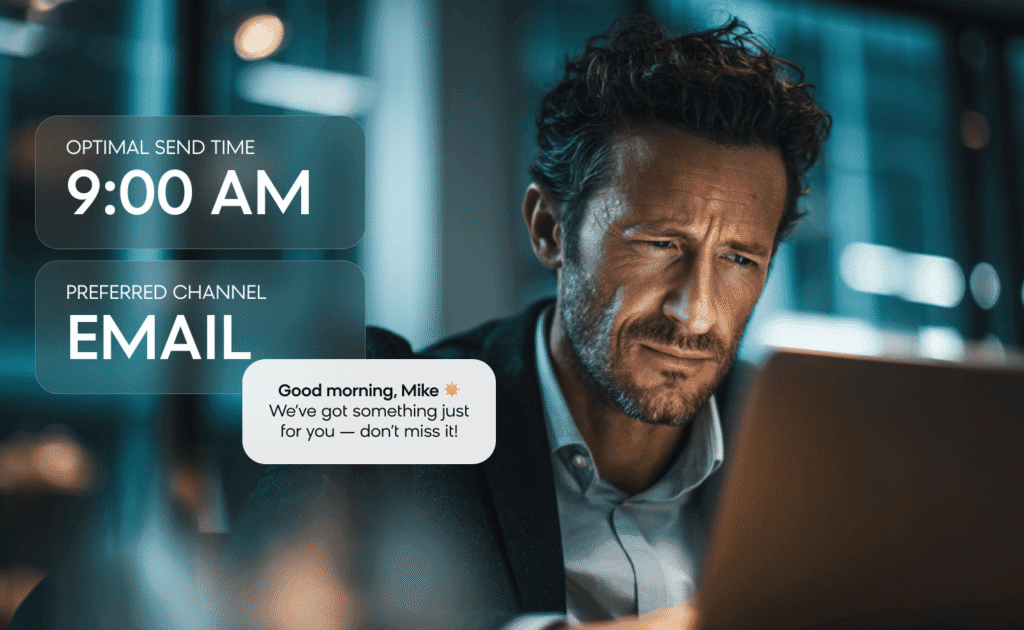
Predictive Personalization: Maximizing Every Customer Relationship
Every customer receives unique content based on predicted needs, preferences, and purchase likelihood. This goes beyond name insertion or recently viewed products. Advanced personalization uses machine learning to predict what customers want to see, buy, or learn about next, dramatically increasing average order values and purchase frequency.
Bloomreach’s personalization approach combines predictive analytics with a unified customer data platform to deliver individualized experiences at scale. The platform analyzes purchase history, browsing behavior, seasonal patterns, and peer group similarities to generate highly relevant content that drives conversions for each recipient.
Commerce-Native Architecture That Drives Revenue
Unlike generic email platforms that require extensive integrations, Bloomreach merges product data, content management, customer journey logic, and search capabilities into a unified platform built specifically for commerce use cases. This integration eliminates the need to connect multiple tools and ensures consistent customer experiences across all interactions, reducing cart abandonment and increasing conversion rates.
Unified Journey Builder That Maximizes Customer Value
Your email, SMS, push notifications, and website interactions need to flow from a single coordination engine that optimizes for business outcomes. With Bloomreach, marketers can design complex, omnichannel customer journeys without managing separate platforms or coordinating between different systems, enabling sophisticated nurture sequences that increase customer lifetime value while reducing operational complexity.
AI That Scales Personalization
Bloomreach’s platform uses autonomous AI agents to significantly cut down on manual processes. This means marketers can focus on high-impact strategy, while the AI creates launch-ready campaigns in minutes. AI is crucial in unlocking greater scale for growing brands.
10 Foundational Campaigns Reimagined With AI
Classic email campaigns remain effective when upgraded with AI automation and contextual intelligence that drives measurable business outcomes. These foundational campaign types demonstrate how intelligent automation transforms traditional approaches into revenue-generating engines.
1. Personalized Onboarding That Builds Customer Value
AI analyzes new subscriber behavior to create unique welcome sequences based on signup source, initial browsing patterns, and demographic signals. Instead of identical welcome emails that feel impersonal, you can deliver personalized product recommendations and content matching each user’s interests, increasing early purchase rates and long-term customer value.
2. Predictive Cart Recovery That Maximizes Revenue
Abandoned carts represent a huge revenue loss for ecommerce brands, so converting those shoppers is essential for long-term success. Advanced cart abandonment campaigns trigger based on predicted purchase intent rather than simple time delays that miss optimal moments. AI considers cart value, product categories, customer purchase history, and browsing depth to determine optimal messaging and timing.

3. Smart Replenishment That Drives Predictable Revenue
Replenishment campaigns use consumption patterns and purchase history to predict when customers need product refills, creating predictable revenue streams. AI adjusts timing recommendations based on order quantities, seasonal usage patterns, and individual consumption rates, ensuring messages arrive when customers are ready to reorder.
4. Discovery Follow-Ups That Convert Browsers Into Buyers
These campaigns trigger when AI detects high purchase intent based on browsing behavior patterns. Instead of generic “you left something behind” messages, they provide personalized recommendations based on viewed products, price sensitivity, and peer group preferences, converting browsing sessions into revenue.
5. Back-in-Stock Alerts That Capture Pent-Up Demand
Inventory and pricing alerts activate immediately when products become available or reach target prices, capturing revenue that would otherwise be lost. AI prioritizes notifications based on customer demand signals and conversion likelihood, ensuring your highest-value prospects receive priority access.
6. Individualized Promotions That Optimize Profit Margins
AI-powered promotional campaigns offer personalized incentives based on price sensitivity, purchase history, and conversion probability. High-value customers receive early access offers that reinforce loyalty while price-sensitive segments get targeted discounts that drive volume, optimizing both revenue and profit margins.
7. Loyalty Upsells That Increase Customer Lifetime Value
Loyalty campaigns use recency, frequency, and monetary (RFM) analysis combined with customer lifetime value (CLV) predictions to deliver relevant upgrade offers and exclusive experiences. Your best customers receive VIP treatment that encourages higher spending and longer relationships.
8. Subscription Flows That Reduce Churn and Increase Retention
Subscription-based campaigns use predictive analytics to identify churn risk, optimize delivery timing, and suggest plan modifications before customers cancel. This proactive approach protects recurring revenue while identifying opportunities for account upgrades.
9. Post-Purchase Review Requests That Build Social Proof
Review request campaigns trigger based on delivery confirmation, product type, and customer engagement patterns rather than fixed time delays. AI optimizes request timing for maximum response rates, generating the social proof that drives new customer acquisition.
10. Fatigue-Aware Reengagement That Recovers Lost Revenue
Reengagement campaigns adjust frequency and messaging based on individual customer preferences and engagement patterns. AI prevents over-messaging that damages relationships while maintaining consistent contact with dormant subscribers, recovering revenue from customers who might otherwise be lost forever.

Additionally, AI can automatically identify audience segments so you can reach the right audience with more targeted messaging instead of potentially pushing shoppers away.
What Your Marketing Team Gains: From Manual Tasks to Revenue Impact
The shift toward autonomous retail email marketing fundamentally changes how your marketing teams spend their time and directly impacts your business growth. Instead of manually building campaigns, testing variations, and managing complex workflows, your marketers focus on strategic initiatives and creative development that move revenue needles.
AI automation saves your team valuable time previously spent on campaign production tasks. Template design, audience segmentation, send-time optimization, and performance testing happen automatically. This efficiency gain allows your marketing teams to run more sophisticated campaigns with existing resources while reducing operational costs.
Your marketers gain the ability to launch adaptive campaigns without developer support or IT dependencies that create bottlenecks. Modern platforms like Bloomreach provide intuitive interfaces that enable complex personalization and automation without technical expertise. Your teams can then respond quickly to market opportunities, seasonal trends, and competitive pressures that affect revenue.
Most importantly, automation shifts your marketing teams from production-focused to performance-focused roles that directly impact business outcomes. Instead of spending time on tactical execution, your marketers concentrate on customer experience optimization, brand storytelling, and strategic campaign development. This transformation enables more creative and strategic approaches to customer engagement while delivering measurable improvements in customer acquisition, retention, and lifetime value.
Proof Points: Real Results From Leading Retailers
Moving beyond theoretical benefits, let’s look at some successful implementations of AI-powered retail email marketing. These real-world examples illustrate how the strategic shift from manual to autonomous email marketing translates into measurable revenue growth and operational efficiency.
VR Personalizes Its Email Marketing More Effectively With Bloomreach
Finnish railway VR wanted a more data-driven approach to reaching and engaging its customers. With Bloomreach, VR could use unified customer profiles to better segment its audience and deliver personalized emails.
As a result, VR was able to improve email open rates by 20% and boost revenue per customer by 30%. What’s more, the organization was able to accomplish this without having to rely on dev teams — Bloomreach’s easy-to-use platform allowed marketers to scale up quickly and effectively.
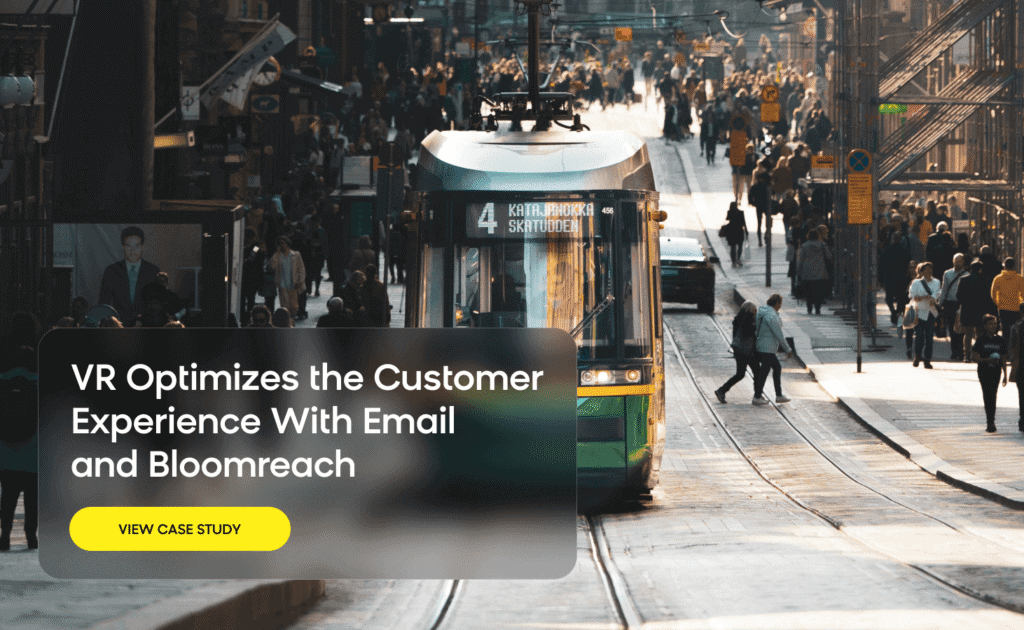
BrewDog Optimizes Revenue From Emails
Craft beer company BrewDog wanted to drive more clicks (and subsequently, conversions) from its emails, but wanted to go beyond generic campaigns. Fortunately, BrewDog was able to use Bloomreach (and our native integration with Shopify) to get up and running in less than a week. From there, the brewer could send personalized emails based on web activity, recent purchases, and BrewDog investor status.
The results? Personalized data made all the difference. For customers who received personalized emails, BrewDog saw 15.6% more clicks, 11.5% higher conversion rate, and 13.8% more revenue.
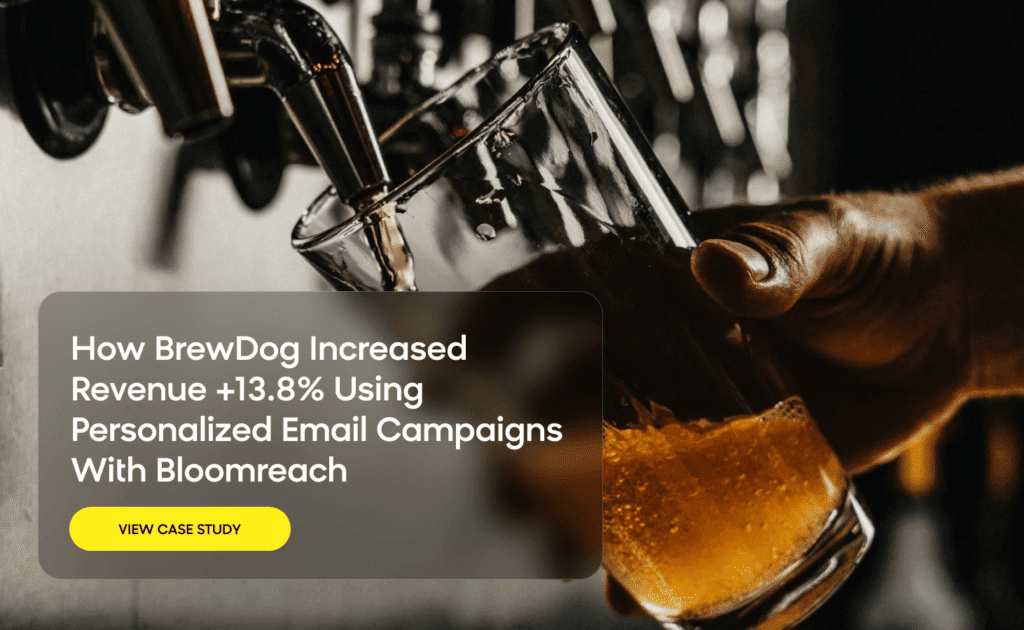
Email as Strategic Growth Lever in 2025: Your Competitive Advantage
The transformation of retail email marketing represents more than technological evolution — it signals a fundamental shift in how successful brands approach customer engagement and sustainable revenue generation. The progression from batch campaigns to behavior-driven customer journeys and from manual processes to autonomous marketing creates new opportunities for lasting competitive advantage in an increasingly crowded marketplace.
In order for retailers to win, they need the power of AI. That’s where a platform like Bloomreach Engagement shines. Not only does the platform unify customer data into a single place, it also allows brands to act upon that data to create tailored segments and hyper-personalized campaigns — all at scale. Plus, email is just the starting point — with Bloomreach’s all-in-one platform, retailers can connect their campaigns to every channel to ensure a seamlessly personalized customer experience.
Ready to see autonomous email marketing transform your customer engagement strategy and drive measurable revenue growth? Learn more about how Bloomreach puts the AI in email and how we help you unlock your brand’s full potential for customer acquisition, retention, and lifetime value optimization.
